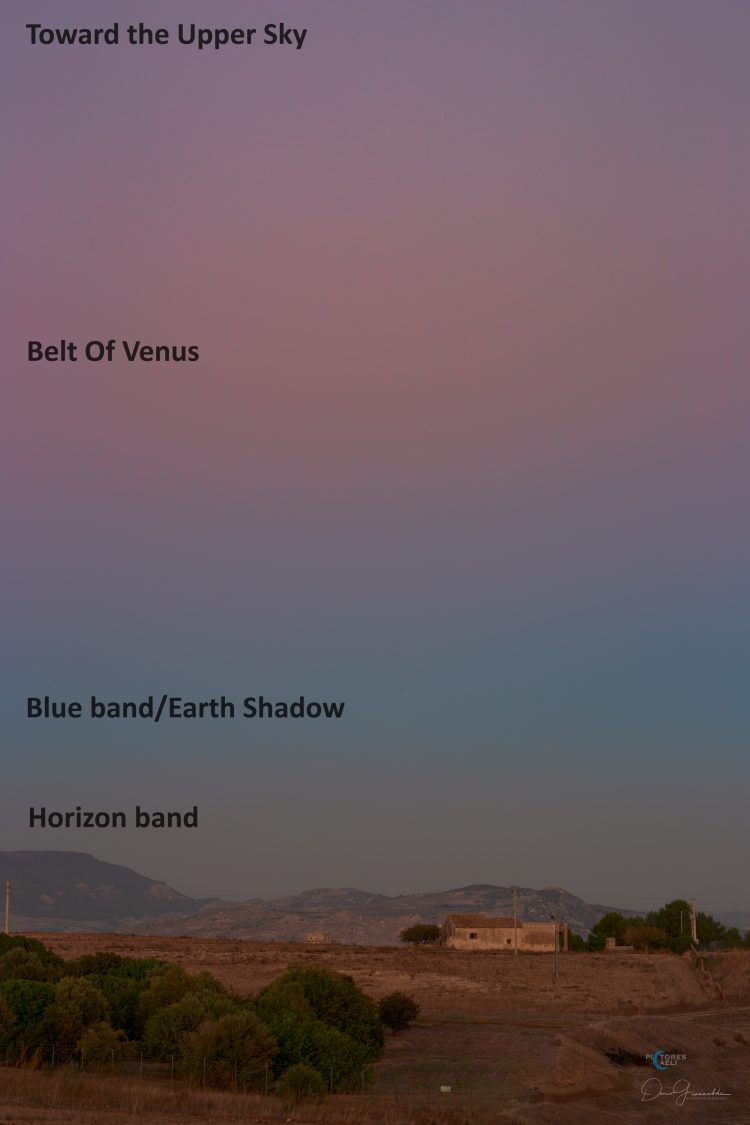The Elusive Bands of Anti-Twilight
Description
The 3 main bands that form during anti-twilight (be it before sunrise or after sunset).The phenomenon was imaged in the Sicilian countryside of Gela with a focal length of 105 mm to amplify the visibility of the layers (13° x 19.5°). Of all the bands, the horizon band is certainly the most elusive to observe and requires very specific conditions of transparency of the atmosphere.The evolution of the bands is well explained in the article “Antitwilight I: structure and optics” from which my description draws inspiration.
Belt of Venus (BV)
The Belt of Venus (BV) begins to appear when the sun grazes the horizon and then sinks approximately -2° degrees below the horizon. In this situation the belt appears pink because the red component of the light prevails over the blue component. “The pink color of BV is a consequence of air molecules illuminating the low, yellowish or reddish Sun. At the same time, the color of the scattered light is modified by Rayleigh scattering, adding blue to it.”
When the sun lowers between -°3 and -6° the belt begins to lose the red component and the blue tends to prevail while still remaining visible by contrast with the blue band and the upper sky. At this stage its contours tend to fade and become increasingly indistinguishable.
Blue Band (BB)
As the Sun sinks below the horizon, the earth’s shadow is cast on the atmosphere. Its thickness is minimal when the sun and the observer are on a line parallel to the horizon and the lower the sun, the more the thickness of this band amplifies until it completely replaces the Belt of Venus when it reaches -8°. “Its rich blue color is a consequence of both multiple Rayleigh scattering and optical depth effects,” especially when the solar altitude is less than about 15°. Being adjacent to the pink BV, the color of the BB is accentuated even more.”
Horizon Band (HB)
The horizon band is mainly due to the observation line near the horizon. Being opaque, the atmosphere amplifies dispersion phenomena by acting on all colors with more or less equal efficiency. For this reason it appears generally white. However, its color may depend on the color of the light shining on it. First the Venus belt makes it pink during sunset and then it turns blue from the blue band. When the blue band is high on the horizon the altitude of the boundary between BB and HB depends on the characteristics of the atmosphere.
Technical details: Canon 6d, Sigma 105mm, f/11, 0,8 sec, iso 100




comments (60)